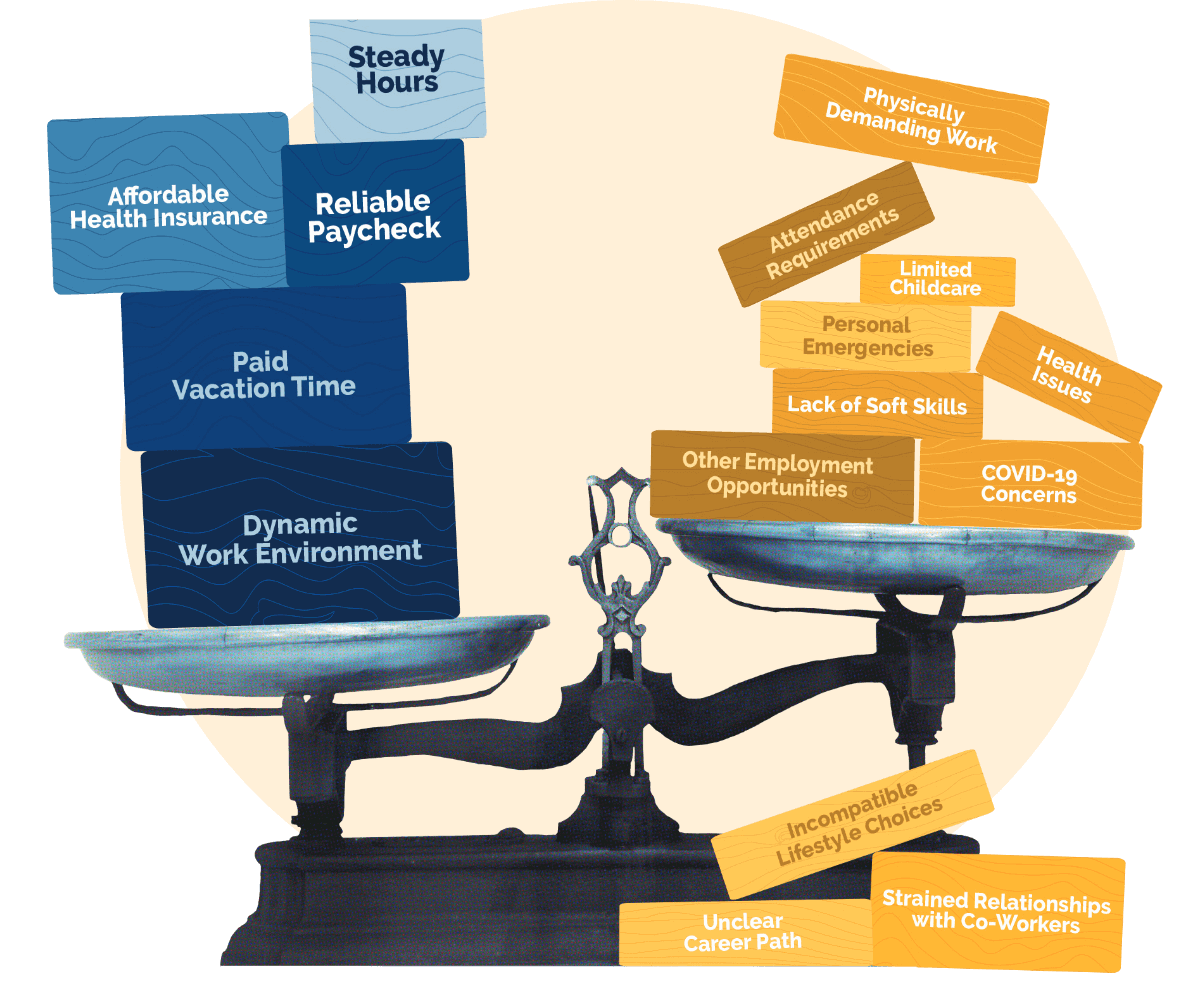
Employee Retention Tactics That Tip The Scale
You thought you’d be fully staffed, but your workers keep leaving. As a result, production is lagging. You feel like you have a revolving door of changing faces instead of a team. In an unstable economy, you rely on contingent workers to help you fulfill many of your labor needs, but these workers are especially difficult to retain.
2.5% of workers – about 4 million – switched jobs on average each month from January to March 2022.
Quits: Total Private
Source: FRED

Despite economic uncertainty, record levels of high employee turnover are continuing to impact companies across industries, but the light industrial and manufacturing industries have been hit especially hard.
What’s more, young adults (ages 18-29) and those with lower incomes are significantly more likely to quit their jobs. Both of these demographics tend to be over-represented in non-supervisory, manual labor jobs in the light industrial and manufacturing industries.
The turnover challenge is very real right now, but it’s also a difficult challenge to address. The reality is that modern, low-wage workers in the manufacturing and light industrial fields are dealing with many factors that have intensified and made them less likely to stick with a job that isn’t working for them.

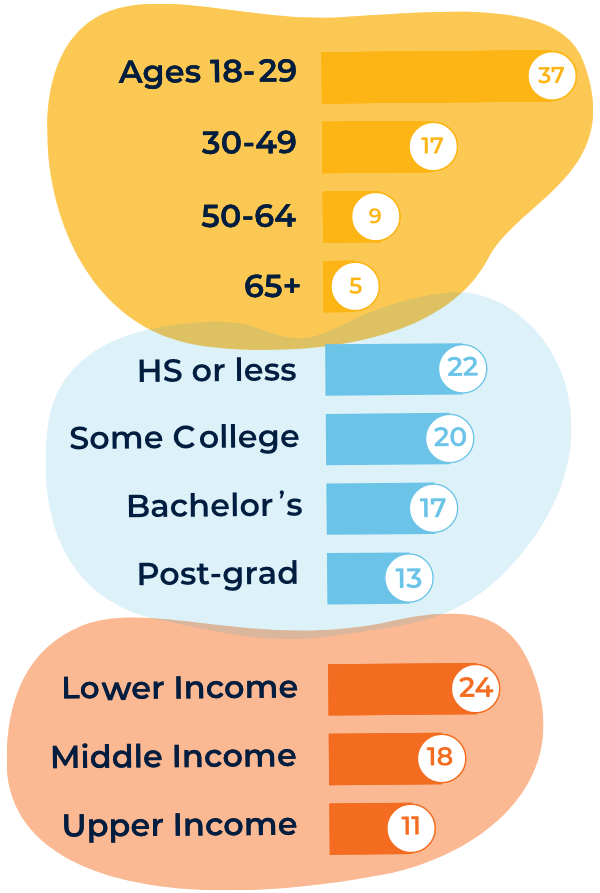
Source: PEW
The Employee Turnover Scale Isn’t Tipped in Your Favor
Picture a scale. On one side, there are reasons why an employee would stick with your company and remain employed. The other side of the scale is stacked with reasons to leave your company. Unfortunately, for many light industrial and manufacturing companies in today’s tumultuous labor force environment, this side of the scale tends to be more heavily stacked.
When the scale is tipped in favor of leaving your company for greener pastures, companies tend to have high rates of employee turnover.
The harsh reality is that even though there are many factors that are creating higher employee turnover, as employers, we can only address some of those factors meaningfully. In other words, we cannot eliminate high turnover, but we can tip the scale in our favor and make a significant impact.
So, what are the factors that we can impact to reduce employee turnover and increase team productivity? That’s what we’ll explore below.
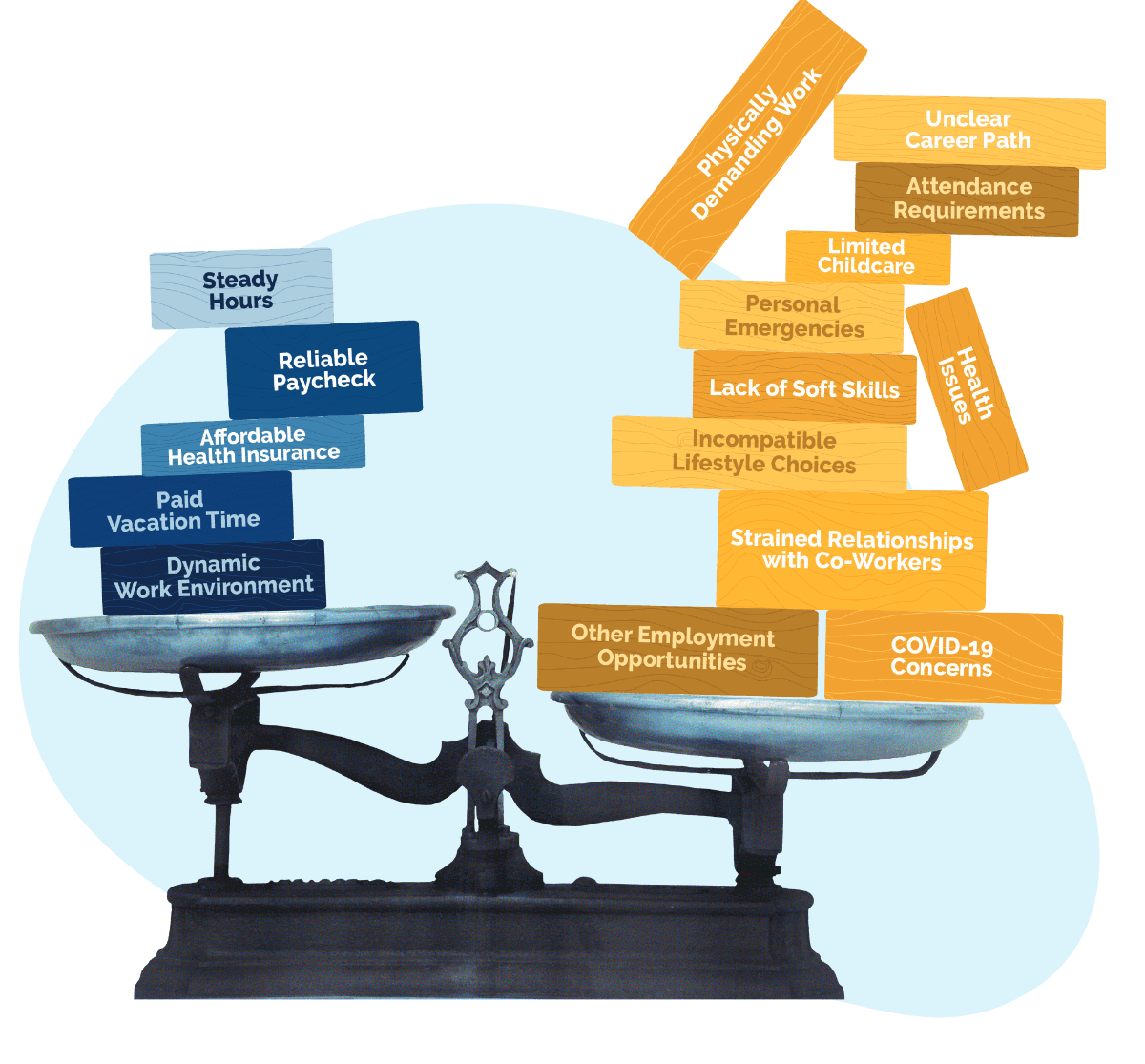
Mindset
The Challenge
Workers with a success mindset have personal goals and believe they are in charge of their life. They are willing to work through challenges because they understand their efforts can help them meet their goals. As a result, employees with a success mindset tend to be reliable and ultimately successful employees.
That said, many modern workers have not developed a success mindset. They feel easily overwhelmed by work-related challenges, and they struggle to connect the dots between how their current actions on the job will impact their long-term future. As a result, they are quick to give up on a job that doesn’t feel good.
A Solution
There isn’t an easy fix to shift someone’s mindset, but we’ve found that, through coaching, many workers can develop a success mindset. Mindset building must be a strategic, thoughtful process of introducing key concepts to workers in a way that is clear, encouraging and participatory. Supervisors are a critical part of the equation, as they help coach the worker to put success mindset concepts into action at work.



Soft Skills
The Challenge
Soft skills like communication, accountability, teamwork and handling feedback are the backbone of productivity and long-term success. When a worker isn’t equipped with these soft skills, they are more likely to feel frustrated or defeated by an inability to meet work expectations and handle relational team issues. Soft skills make your team more productive by preventing misunderstandings and empowering workers to feel supported and motivated, which acts as fuel to retain them.


Source: SHRM
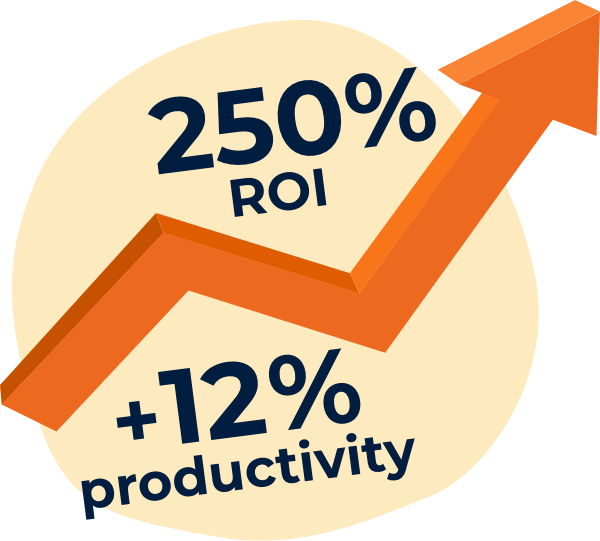
In-factory soft-skill training was found to increase worker productivity and retention by 12% and delivered an ROI of 250% in less than a year.
Source: MIT

A Solution
Just like technical “hard” skills, soft skills can be taught to willing workers. To help workers fill in any soft skill gaps they may have, they will need a soft curriculum to work through and plenty of coaching from their supervisor.
Poor Relationships with Direct Leader
The Challenge
It turns out there’s a lot of truth in saying, “People don’t quit jobs — they quit bosses.”
Today’s manufacturing and light industrial workers often struggle to forge positive relationships with their direct leader, a relationship that is a critical driving force in workers’ success. This is especially true for lowwage workers. With fewer tangible resources to help them deal with daily instability, relationships of mutual goodwill become a critical resource for survival. In other words, low-wage workers place a great deal of value on having good relationships at work, especially with their leaders. Unfortunately, workers who don’t have a success mindset and who struggle with soft skills are more likely to have a negative relationship with their leader. But, the relationship goes both ways.
Supervisors and managers often struggle to forge positive relationships with their workers as well. Although these leaders may be skilled in the technical aspects of their job, their coaching skills may fall short, especially when they are experiencing burnout from high employee turnover. As a result, these leaders may chastise struggling workers, which leaves fragile low-wage workers feeling disrespected, unsupported and unequipped to deal with their job.

A Solution
Leaders have tangible results they are in charge of achieving, but leaders must also understand they are charged with forging positive coaching relationships with their team members. Although days are busy, employers should consider programs that help connect leaders with team members in a positive setting where they can have positive interactions that can eventually build a productive and friendly relationship.

28% of people who quit their previous job say they left because of bad management.
Source: Joblist

46% of workers said they currently have a manager who makes them want to quit their job.
Source: TenSpot

Chronic Diseases

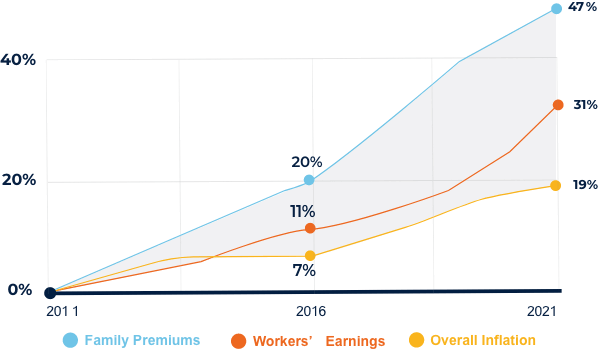
Source: KFF

Source: CDC
The Challenge
Manufacturing and light industrial jobs require more physical work.
Healthy individuals may initially struggle with the physical demands of their new job, but with a routine, they can adjust to their new labor-intensive position. But for workers who have significant health issues, the labor-intensive nature of the job is brutal and, oftentimes, unsustainable.
What’s more, the cost of health insurance has skyrocketed, making basic healthcare unaffordable for many workers. In fact, many workers who pay for insurance cannot afford to use their benefits. As a result, many workers with ongoing health issues find themselves unable to meet the physical demands of their manufacturing and light industrial job, which impacts turnover. As a result, these workers develop a pattern of quitting a good job and supplementing their time with lower-wage but less strenuous positions.
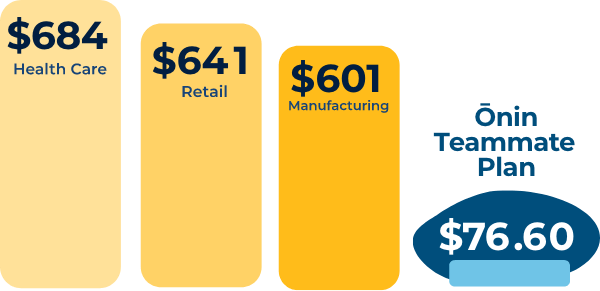
Average Monthly Benefits Cost by Industry vs. the Ōnin Teammate Plan
Source: KFF
The Solution
Maintaining a healthy workforce is crucial for productivity and helping workers have the physical capabilities they need to work a physically demanding job. To help lower-wage workers access critical healthcare, they need access to healthcare that is affordable to them based on their income.
Economic Factor
Consumer prices have increased by 8.3% year-over-year, the largest increase in 40 years
The Challenge
At the end of the day, a job is a means to a paycheck that provides resources to meet basic living needs.
In a high-inflation economy, the cost of living has increased dramatically, which means workers — especially workers considered low-wage — must find a way to leverage higher wages to survive. Swapping jobs is one of the most effective ways for workers, especially low-wage workers, to increase their pay and gain more access to the critical resources they need to make ends meet.

Real Wages are Declining for Manufacturing Workers

Source: St. Louis Fed
A rising share of workers who changed jobs are earning more as a result.
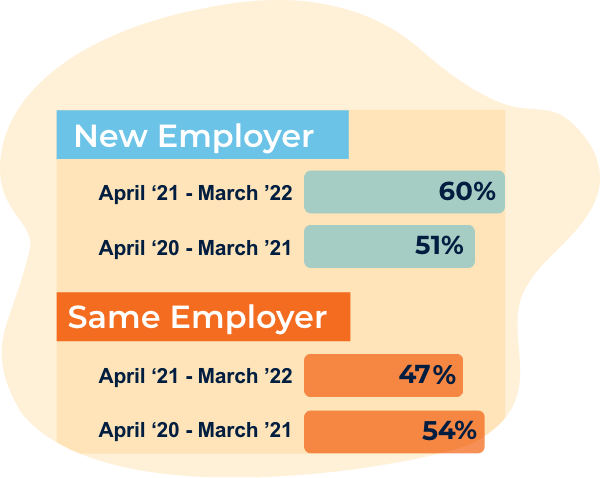
Source: PEW
Manufacturing Wages were better from 1976-2006
Source: FRED
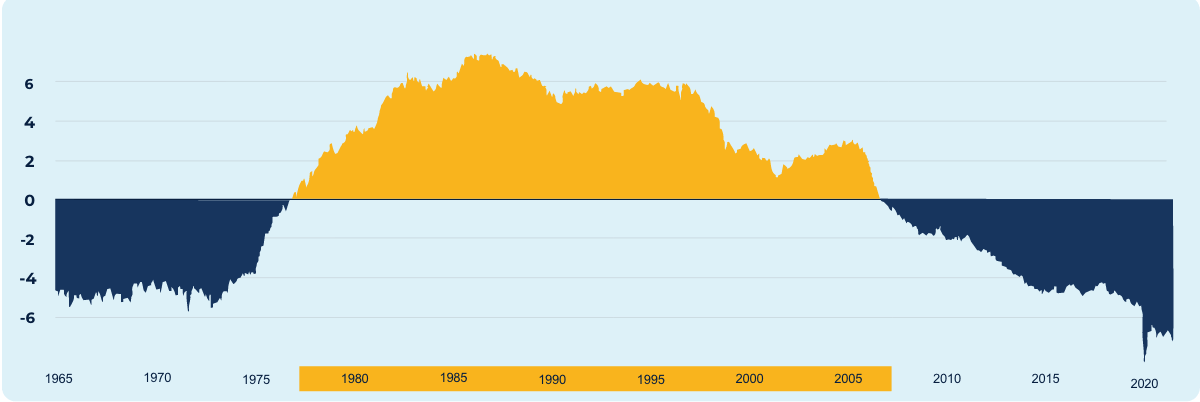
Possible Solution
Recognizing that workers want to make the most money for their hard work and support themselves and their families comfortably in the midst of inflation, employers should make sure their wages are competitive in a rapidly changing job market.
Conclusion
In today’s chaotic labor force filled with so many factors that are out of our control, there is no magic bullet to fix high employee attrition. That said, by strategically addressing the factors we can influence, employers can tip the retention scale in their favor.
We’ve outlined some fundamental retention factors employers can positively influence, but each company has its own set of factors it can and cannot control to tip the turnover scale. Turnover solutions will need to reflect the unique needs of the individual company and workforces they are being implemented for, but there is also a broad principle to keep in mind. To succeed in tipping the turnover scale, employers will need to embrace the human in each employee. Employers reduce turnover when they effectively recognize the emotional needs, physical demands, and tangible resources employees need to succeed on a job. People want competitive jobs, but they also want interpersonal connections and respect from leaders.
They want meaningful interactions as well as tangible resources that will help them better their lives. When employers help workers not only survive but thrive as well-rounded individuals, employers radically increase the likelihood that workers will remain at their company.
